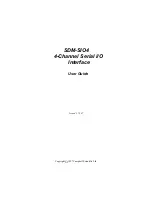
50
Connect the IoT Webserver with the device
Start a HTTP Webserver server on the host.
Open and listen at free selectable TCP port.
Following message is sent from the device to the IoT Webserver via TCP protocol.
TCP payload data chunk 1:
Host: 192.168.0.61:12345
Content-Type: application/json
Transfer-Encoding: chunked
Connection: keep-alive
TCP payload data chunk 2:
{"
code
":"event","
cid
":1000,"
adr
":"/io1-epcs-changed","
data
":{"eventno":"25652","srcurl":"DTE905AB-
0000047712/data/port[1]/rfid/id_tag_list/epcs/datachanged","payload":{"/data/port[1]/rfid/id_tag_list/epcs":{"code":20
0,"data":"e008010c38325124"}}}}
Response
element
Value
Remark
code
"event"
-
cid
<CorrID>
Correlation identifier.
Same as send in request
e.g. 1000
adr
"<target_address>"
e.g.: /io1-epcs-changed
data
{ "eventno":"<number>",
"srcurl": "<service_address>",
"payload":
{
"<service>",
{
"code":<response code>,
"data":"<UID>"
}
}
}
e.g. "25652"
e.g. "DTE905AB-
0000047712/data/port[1]/rfid/id_tag_list/epcs/datachanged
"
e.g. "/data/port[1]/rfid/id_tag_list/epcs"
Response code of the IoT core. e.g. 200
The ‘data’ string element is coded in ASCII hex data.
e.g. "e008010c38325124"
code
200
Response code of the IoT core
See chapter ->
TCP payload data chunk 3:
0















































